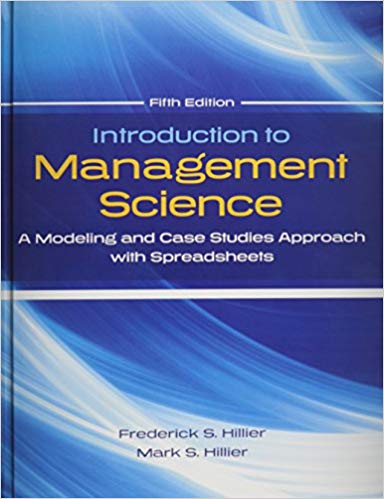Question
There are three main types of probabilities we see: Classical Probability - Classical probability is also known as the true probability. We can compute classical
There are three main types of probabilities we see:
Classical Probability - Classical probability is also known as the "true" probability. We can compute classical probability as long as we have a well-defined sample space, and a well-defined event space. We compute the probability of an event E as follows: P(E)=n(E)n(S) when n(E) refers to the number of elements in our event space and n(S) refers to the number of elements in our sample space. For example, let's take a look at a six-sided die. We can define our sample space as all outcomes of the roll of the die, which gives us the following: S = {1,2,3,4,5,6}. If we let our event E be that the outcome is the number 3, our event space becomes the following: E = {3}. In order to compute the classical probability, we take the number of elements in our event space and divide it by the number of elements in our sample space. This example gives us P(E)=n(E)n(S)=1/6. So, the probability of rolling the number 3 will be 1/6.
Empirical Probability - Empirical probability, also known as statistical probability or relative frequency probability, is probability calculated from a set of data. We compute it the exact same way we computed relative frequency by taking the number of times our event occurred divided by the number of trials we ran. The formula is as follows: P(E)=FrequencyofEventETotalFrequency. Taking a look at the die example, we can run an experiment where we roll a die 20 times and count the number of times the value 3 shows up. Suppose we do IT and see that in 20 rolls of a six-sided die, the number 3 shows up five times. We can compute the empirical probability as follows: P(E)=FrequencyofEventETotalFrequency=5/20=1/4.. We now see that based on our experiment, the probability of rolling a 3 was found to be .
The law of large numbers tells us this: As my sample size increases, the empirical probability of an event will approach the classical probability of the event. When we have smaller sample sizes, we can often see oddities arise. For example, it is entirely possible to flip a fair coin and see the value of heads arise 5 times in a row, or even 9 times out of 10. Our empirical probability is far off our classical probability at this point in time. However, if I continue to flip my coin, I will see my empirical probability starts to approach our classical probability value of 0.5.
Subjective Probability - Subjective probability comes from educated guess, based on past experiences with a topic. For example, a teacher might say that if a student completes all their Statistics assignments before the due date, the probability they pass the course is 0.95.
Instructions
For this discussion, we are going to run an experiment flipping a coin. Follow these steps and record your results:
Step 1 - Flip a coin 10 times. Record the number of times Heads showed up.
Step 2 - Flip a coin 20 times. Record the number of times Heads showed up.
Respond to the following prompts in your initial post:
- What was your proportion of heads found in Step 1 (Hint: To do this, take the number of heads you observed and divide it by the number of times you flipped the coin). What type of probability is this?
- How many heads would you expect to see in this experiment of 10 coin flips?
- What was your proportion of heads found in Step 2 (Hint: To do this, take the number of heads you observed and divide it by the number of times you flipped the coin) What type of probability is this?
- How many heads would you expect to see in this experiment of 20 coin flips?
- Do your proportions differ between our set of 10 flips and our set of 20 flips? Which is closer to what we expect to see?
Step by Step Solution
There are 3 Steps involved in it
Step: 1

Get Instant Access to Expert-Tailored Solutions
See step-by-step solutions with expert insights and AI powered tools for academic success
Step: 2

Step: 3

Ace Your Homework with AI
Get the answers you need in no time with our AI-driven, step-by-step assistance
Get Started


